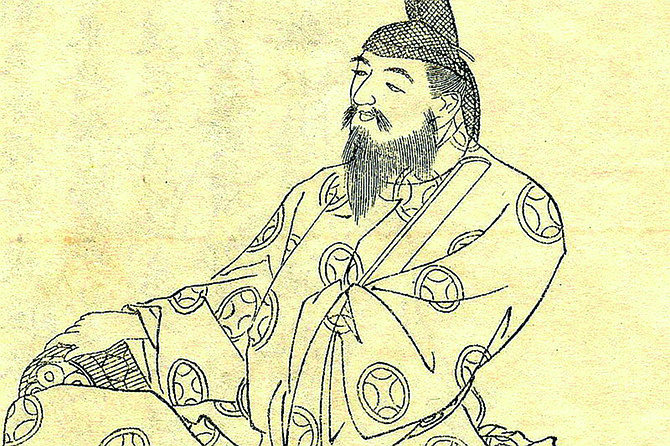 Facebook
Facebook
 X
X
 Instagram
Instagram
 TikTok
TikTok
 Youtube
Youtube

The Kojiki
Izanagi no Mikoto and Izanami no Mikoto [i.e. “the divine primal pair”] consulted together, saying: “We have now produced the Great-eight-island country, with the mountains, rivers, herbs, and trees. Why should we not produce someone who shall be lord of the universe?” They then together produced the Sun Goddess, who was called O-hiru-me no muchi [“Great-noon-female-of-possessor”] …The resplendent luster of this child shone throughout all the six quarters. Therefore the two Deities rejoiced, saying: “We have had many children, but none of them have been equal to this wondrous infant. She ought not to be kept long in this land, but we ought of our own accord to send her at once to Heaven, and entrust to her the affairs of Heaven.” At this time Heaven and Earth were still not far separated, and therefore they sent her up to Heaven by the ladder of Heaven. They next produced the Moon-god…. His radiance was next to that of the Sun in splendor. This God was to be the consort of the Sun-Goddess, and to share in her government. They therefore sent him also to Heaven.
–from the Kojiki (“Records of Ancient Matters”)
The Kojiki (“Records of Ancient Matters”) is an early Japanese account of the myths, legends and genealogies which relate the origins of the Japanese islands and the Japanese imperial bloodline. Considered the oldest work of Japanese literature, it was edited and compiled (although some believe it was composed) by O no Yasamuro (d. 723 AD) in 641 after he was commissioned by the early eighth-century Empress of Japan, Genmei to compile the chronicles of the country. The work became a guiding text for Shinto practices and traditions.


The Kojiki
Izanagi no Mikoto and Izanami no Mikoto [i.e. “the divine primal pair”] consulted together, saying: “We have now produced the Great-eight-island country, with the mountains, rivers, herbs, and trees. Why should we not produce someone who shall be lord of the universe?” They then together produced the Sun Goddess, who was called O-hiru-me no muchi [“Great-noon-female-of-possessor”] …The resplendent luster of this child shone throughout all the six quarters. Therefore the two Deities rejoiced, saying: “We have had many children, but none of them have been equal to this wondrous infant. She ought not to be kept long in this land, but we ought of our own accord to send her at once to Heaven, and entrust to her the affairs of Heaven.” At this time Heaven and Earth were still not far separated, and therefore they sent her up to Heaven by the ladder of Heaven. They next produced the Moon-god…. His radiance was next to that of the Sun in splendor. This God was to be the consort of the Sun-Goddess, and to share in her government. They therefore sent him also to Heaven.
–from the Kojiki (“Records of Ancient Matters”)
The Kojiki (“Records of Ancient Matters”) is an early Japanese account of the myths, legends and genealogies which relate the origins of the Japanese islands and the Japanese imperial bloodline. Considered the oldest work of Japanese literature, it was edited and compiled (although some believe it was composed) by O no Yasamuro (d. 723 AD) in 641 after he was commissioned by the early eighth-century Empress of Japan, Genmei to compile the chronicles of the country. The work became a guiding text for Shinto practices and traditions.
Comments